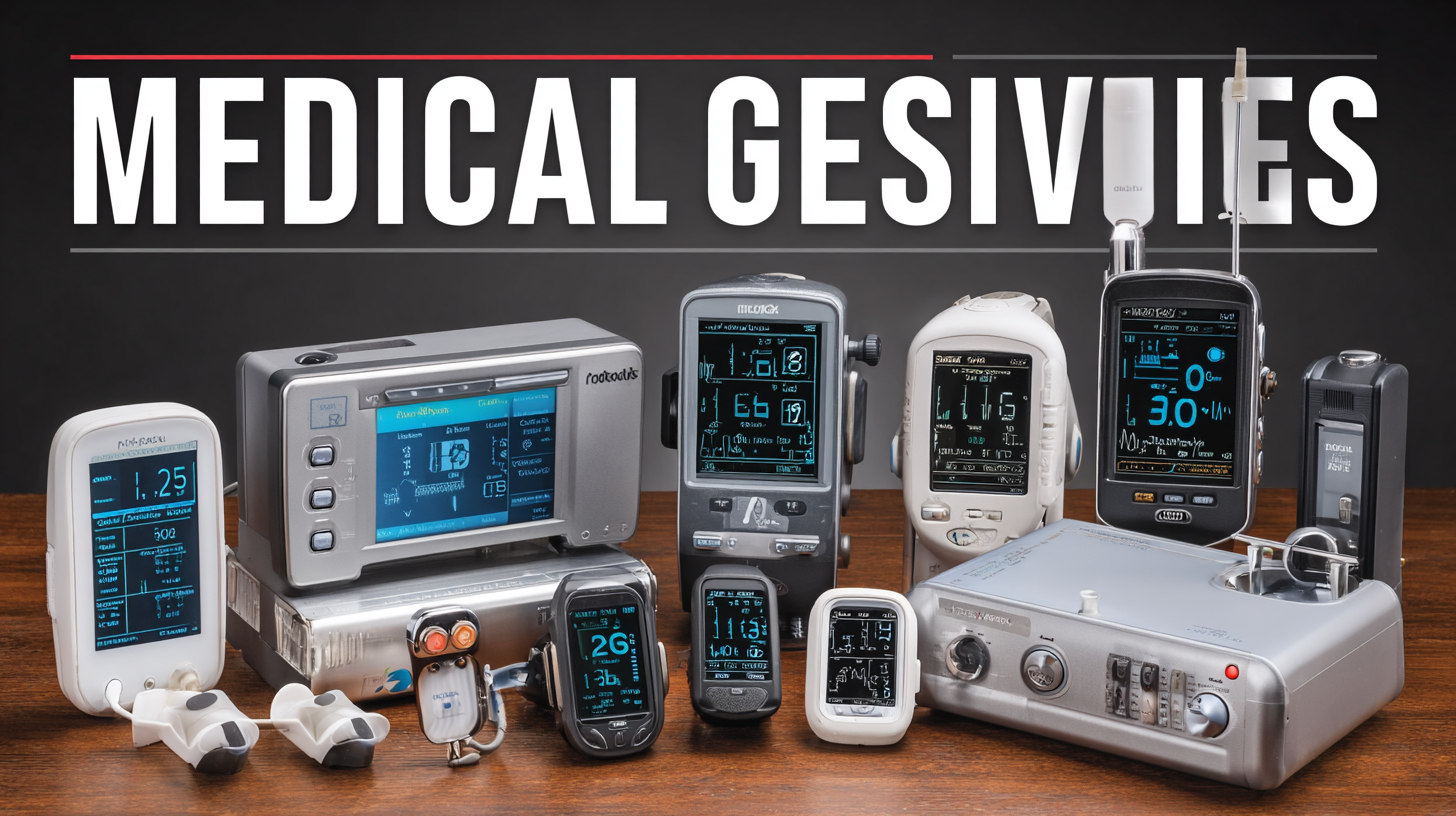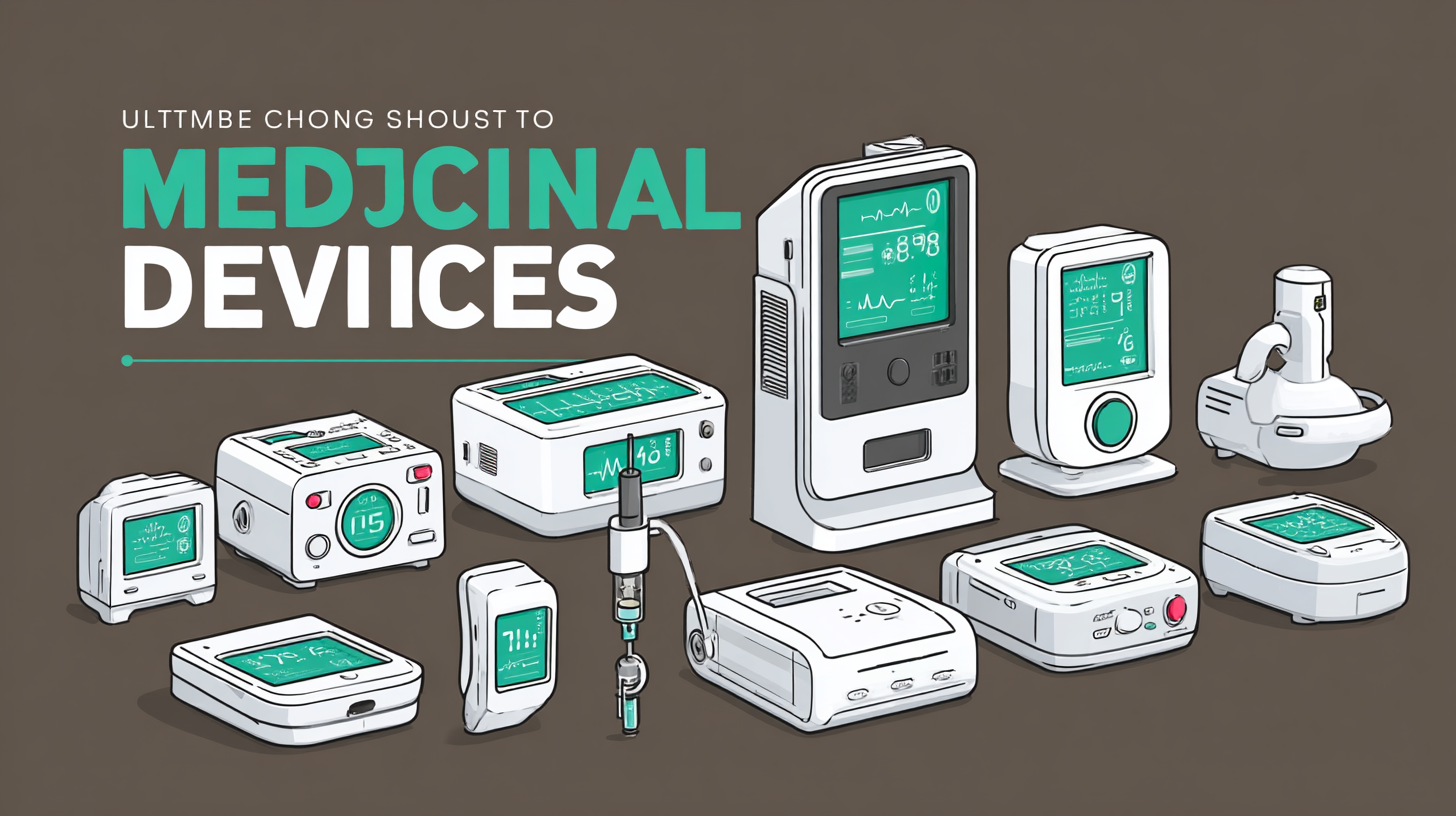Ultimate Guide to Choosing the Best Medical Monitoring Devices for Your Needs
In today's rapidly evolving healthcare landscape, the importance of Medical Monitoring Devices has reached unprecedented levels, as evidenced by a recent market analysis predicting that the global medical monitoring devices market will surpass $32 billion by 2025, growing at a CAGR of 12.5%. This surge is fueled by increasing chronic disease prevalence, an aging population, and a growing emphasis on patient-centered care.

In particular, the introduction of advanced technologies such as wearable devices and telemedicine has transformed how patients engage with their health. As a result, choosing the right medical monitoring devices tailored to individual needs has never been more critical. With a commitment to quality and innovation, the Chinese manufacturing sector stands at the forefront of this revolution, offering a diverse range of products that represent both global excellence and local craftsmanship. This ultimate guide aims to equip you with the insights necessary to make informed choices when selecting the best medical monitoring technology for your requirements.
Understanding the Different Types of Medical Monitoring Devices Available Today
When it comes to selecting the right medical monitoring devices, understanding the various types available is essential to meet your specific health needs. The market for wearable health devices is booming, projected to reach $39.03425 billion in 2024, with substantial growth continuing into 2032. This illustrates an increasing reliance on technology for personal health management. Key categories include wearable fitness trackers, smart health watches, ECG monitors, and blood pressure monitors, each serving distinct functions that can enhance your health tracking experience.

Tips: When choosing a device, consider your primary health concerns. For heart health, an ECG monitor may be invaluable, while fitness enthusiasts might benefit most from an advanced fitness tracker. Additionally, look for devices that offer mobile app integration, as this can enhance your overall experience by allowing easy access to data and insights on your health trends.
Another important factor is usability. Opt for devices that provide a user-friendly interface, especially if you're not tech-savvy. Reviews and features can guide you in selecting a device with notifications that remind you to take measurements or refills, ensuring that you stay on top of your health monitoring.
Key Benefits of Using Wearable Health Monitors for Daily Life
Wearable health monitors have revolutionized the way we manage our health in daily life. These devices, ranging from fitness trackers to smartwatches, provide real-time insights into vital health metrics such as heart rate, sleep patterns, and activity levels. One of the key benefits of using these devices is their ability to promote proactive health management. By offering immediate feedback, they encourage users to adopt healthier habits and make informed lifestyle choices.
Tips for choosing the right wearable health monitor include assessing your specific health goals and lifestyle needs. If you’re primarily focused on fitness, a device with extensive activity tracking and heart rate monitoring may be ideal. For those looking to manage chronic conditions, consider options that offer blood glucose monitoring or ECG capabilities. Additionally, evaluate battery life and app compatibility, as these factors can significantly enhance your overall user experience.
Another important aspect of wearable monitors is their role in fostering accountability. Sharing data with healthcare providers can help track progress and identify areas for improvement. To get the most out of your device, set achievable goals and regularly review your health metrics. This not only keeps you motivated but also allows for timely adjustments to your health plan.
The Importance of Remote Patient Monitoring in Chronic Disease Management
 Remote patient monitoring (RPM) has emerged as a pivotal component in the management of chronic diseases. With an increasing number of individuals living with conditions such as diabetes, heart disease, and respiratory issues, the need for effective monitoring solutions has become critical. RPM technologies enable healthcare providers to gather real-time data on patients' health metrics, allowing for timely interventions and personalized care plans tailored to individual needs. This proactive approach not only enhances the quality of care but also empowers patients to take charge of their health.
Remote patient monitoring (RPM) has emerged as a pivotal component in the management of chronic diseases. With an increasing number of individuals living with conditions such as diabetes, heart disease, and respiratory issues, the need for effective monitoring solutions has become critical. RPM technologies enable healthcare providers to gather real-time data on patients' health metrics, allowing for timely interventions and personalized care plans tailored to individual needs. This proactive approach not only enhances the quality of care but also empowers patients to take charge of their health.
One of the main advantages of remote patient monitoring is its ability to bridge the gap between patients and healthcare providers, particularly for those in rural or underserved areas. By utilizing devices such as wearable sensors and mobile health applications, patients can easily track their symptoms and share vital information with their medical team from the comfort of their own homes. This continuous stream of data facilitates better engagement, supports adherence to treatment protocols, and ultimately leads to improved health outcomes. Moreover, the integration of remote monitoring tools into chronic disease management helps reduce hospital admissions and emergency room visits, signifying a shift towards a more efficient healthcare system focused on preventive care.
How to Select the Right Device for Your Specific Health Needs
When selecting the right medical monitoring device for your specific health needs, it's crucial to understand the evolving landscape of health technology. According to the latest NIQ report on global health trends, consumers are increasingly looking for devices that offer comprehensive health tracking capabilities and integrate seamlessly into their lifestyle choices. As the adoption of health monitoring devices accelerates, it is important to consider products that cater to individual health metrics, such as heart rate and oxygen levels, which are central to maintaining overall wellness.
Smart wearables, particularly smartwatches and fitness trackers, have emerged as popular options due to their convenience and multifunctionality. These devices not only facilitate real-time health monitoring but also encourage active engagement in personal health management. For instance, recent observations highlight a trend where users are gravitating towards devices that allow for easy tracking of vital statistics and promote healthier lifestyle choices, aligning with the finding that consumers now prioritize clinical efficacy when making health-related decisions. By understanding these trends and assessing your specific health requirements, you can make an informed choice that supports your wellness journey effectively.
Cost vs. Benefit: Is Investing in Medical Monitoring Devices Worth It?
Investing in medical monitoring devices can feel daunting, especially when weighing the cost against potential benefits. Many individuals hesitate to spend money on these devices due to the perception that they may be unnecessary or overly expensive. However, the right device can offer peace of mind and critical insights into one's health. For example, a blood glucose monitor can empower diabetics to manage their condition more effectively, potentially avoiding costly hospital visits down the line.
When evaluating whether a medical monitoring device is worth the investment, consider a few essential tips. First, identify your specific health needs: are you managing a chronic condition, or are you simply looking for preventive measures? Second, think about the long-term savings a device might offer by reducing the need for frequent doctor visits or emergency interventions. Lastly, read reviews and consult healthcare professionals to ensure the reliability and accuracy of the devices you're considering, as this can greatly influence your overall satisfaction and health outcomes.
